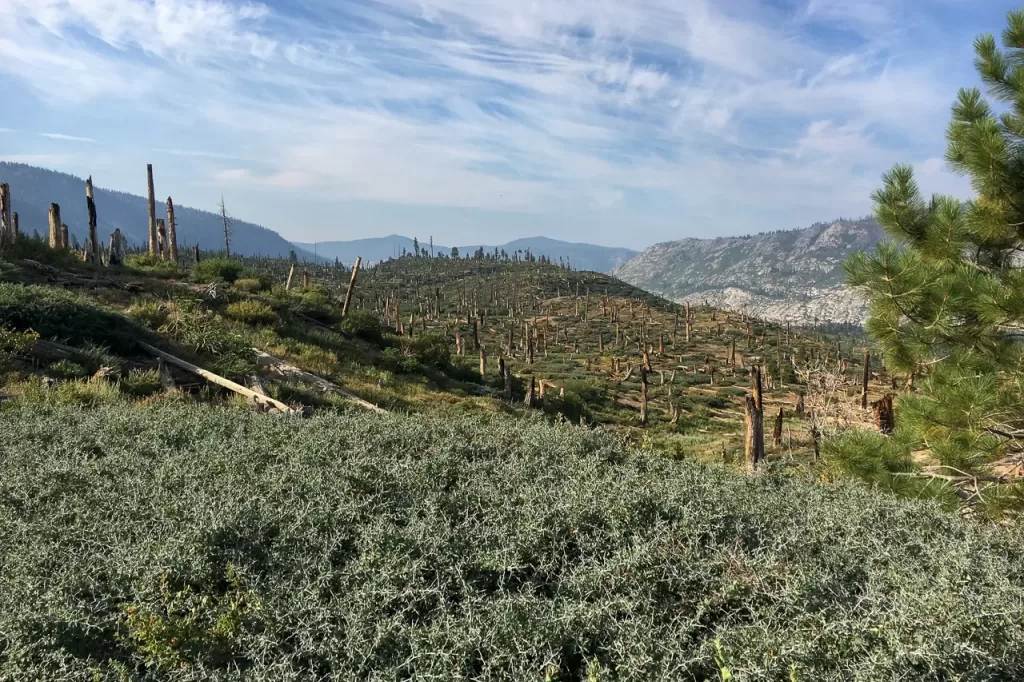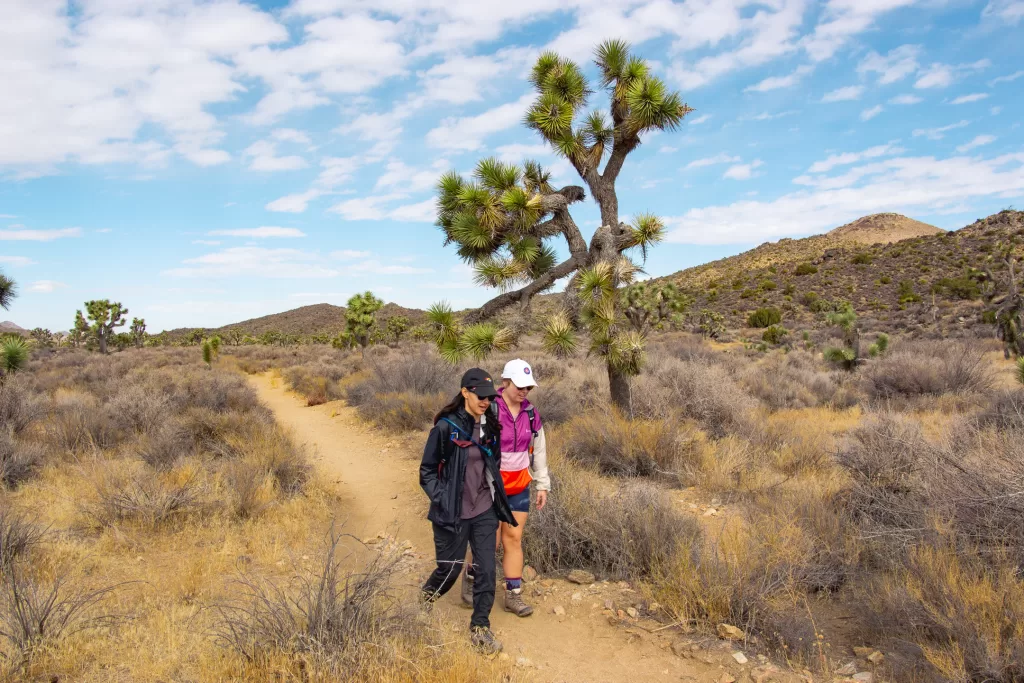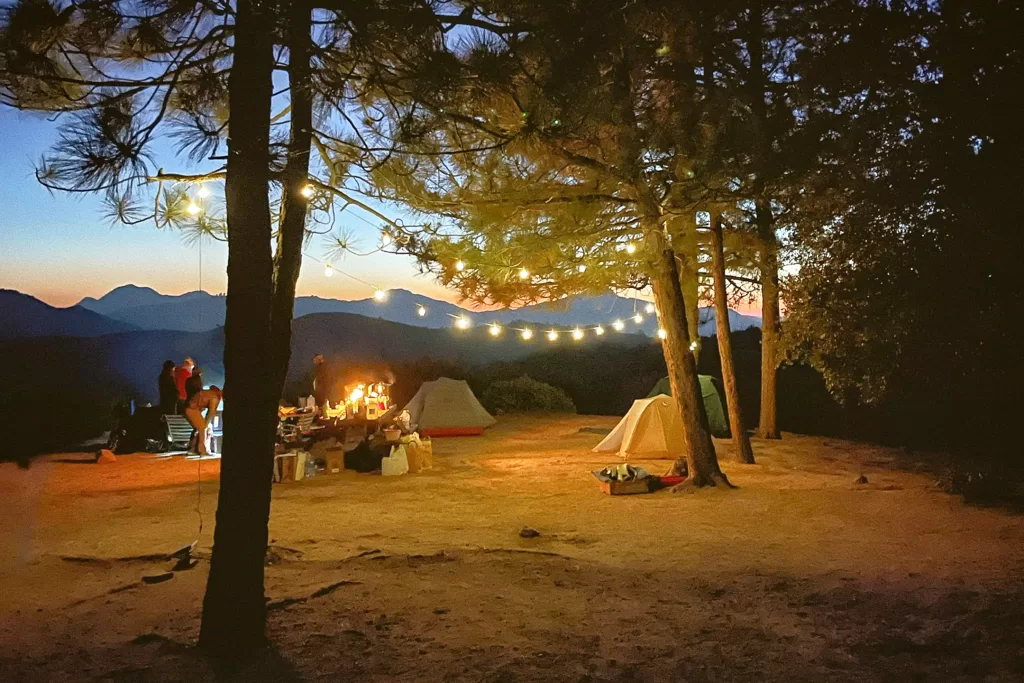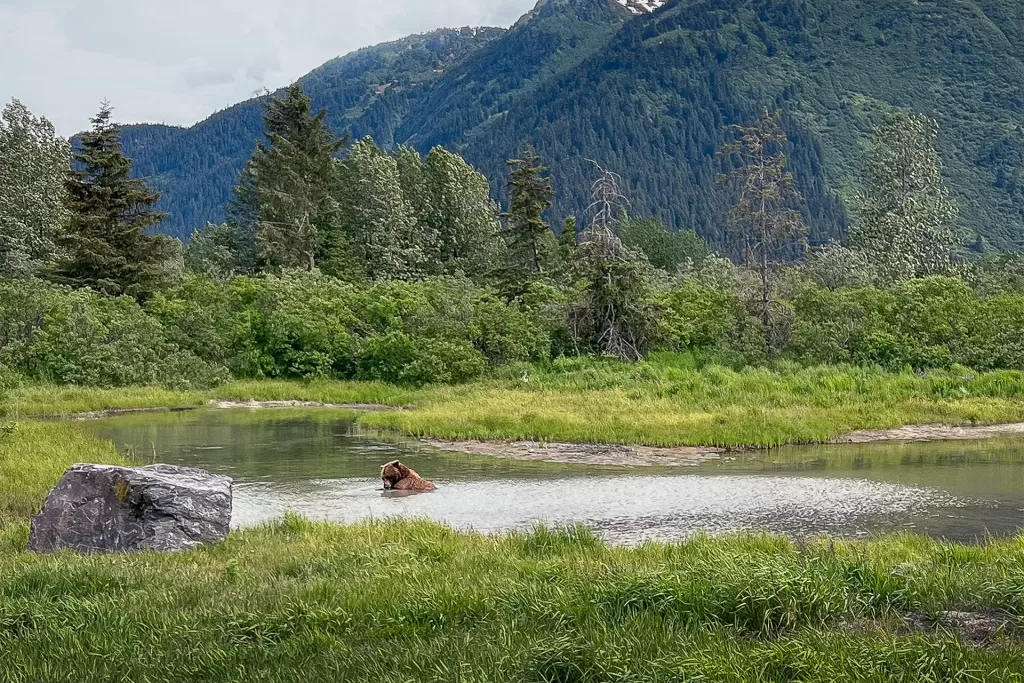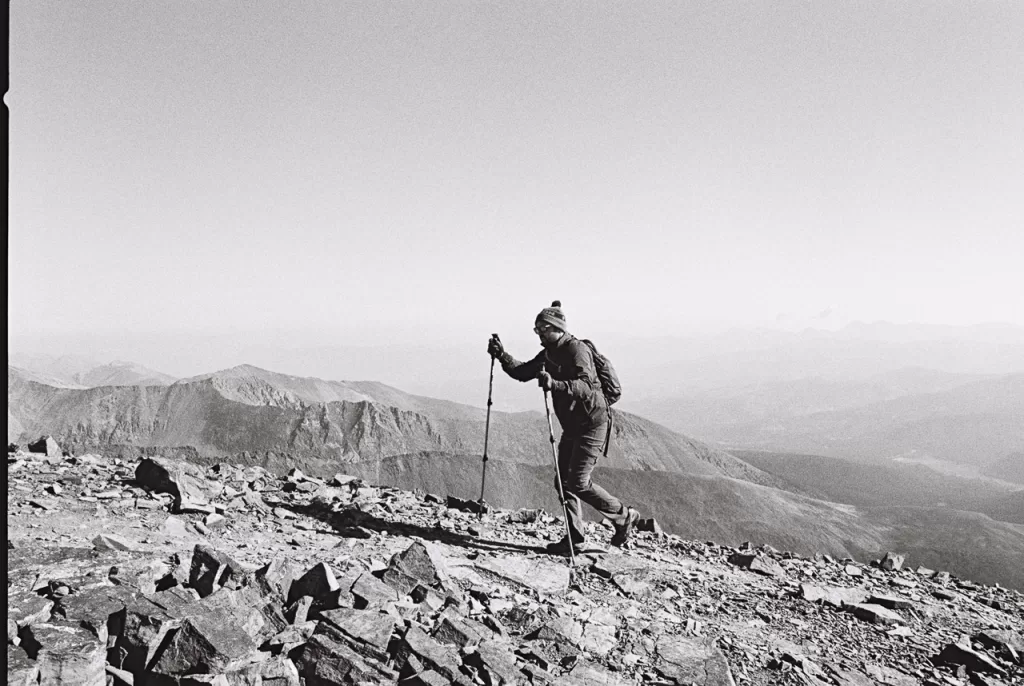Wildfires are becoming a more serious concern when exploring the outdoors. With decades of fire suppression paired with a changing climate, they are burning bigger and longer than ever before. Still, with the proper knowledge, it’s easy for you to recreate outside safely. To mitigate any risks, familiarize yourself with these forest fire safety tips.
Do Your Homework Beforehand
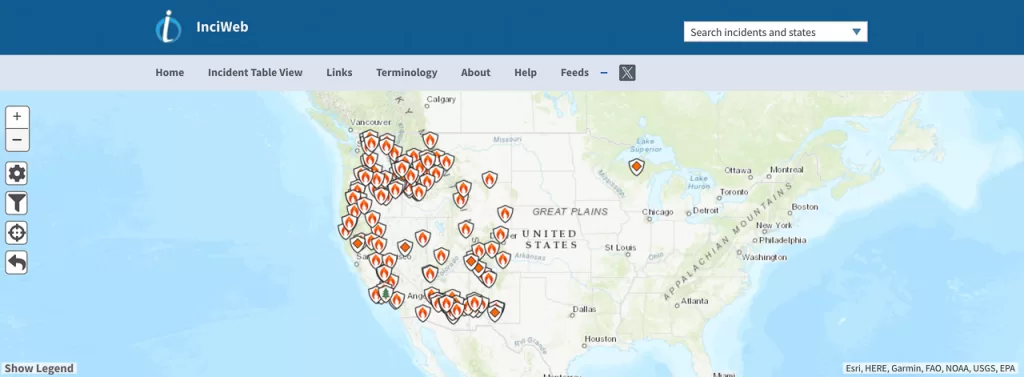
Forest fire safety begins even before leaving the house. When preparing for your trip, the first step is to check for any fire restrictions. In the summers, many areas will either restrict campfires to park-provided fire rings or prohibit fires altogether. Next, pay attention to the weather. Keep an eye out for potential thunderstorms or heat waves, as these will increase the chances of a wildfire breaking out. Also, visit InciWeb or download an app like Watch Duty to see if there are any active fires near where you want to go. Finally, a few days before your trip, Check state fire incident websites (like CalFire) and call the local ranger station to see what the wildfire risk is like.
For information on air quality, visit airnow.gov. If the AQI reads “unhealthy”, start thinking about alternatives. You likely won’t have a good time and potentially could get sick.
Follow Outdoor Safety Best Practices
If you plan on heading out into the wilderness, there are several steps you can take to help ensure your safety, especially if there’s a risk of wildfires. First, share your itinerary with someone back home and, if possible, fill out a voluntary permit or trailhead register. That way, others will know where to look for you if anything happens. Also, make sure to download any maps and GPX tracks of where you’re planning on visiting, or carry a physical map and compass. If you’re out in the wilderness and need to adapt or bail due to a fire, then having a map ready will help show you possible escape routes. Finally, carry a phone with SOS capabilities or, even better, a satellite messenger like the Garmin inReach Mini 2. That way, you can call for help if a fire is approaching.
Stay Away From Closed Areas
While it may be tempting to ignore a closure, especially if it looks like there isn’t any threat of fire, avoid hiking on any closed trails. Not only will you risk facing criminal charges, but you’ll also be entering a potentially dangerous situation. Fire damage can result in unexpected landslides, downed and unstable trees, and large sections of destroyed trail. Signage and other markers are also likely burned, making the path much more difficult to navigate. And should you need to call for help, search and rescue may be less inclined to bail you out (paired with the fact that you’re committing a crime by trespassing). For your and everyone else’s safety, adhere to any trail closures and use an alternate route instead.
Practice Proper Campfire Safety
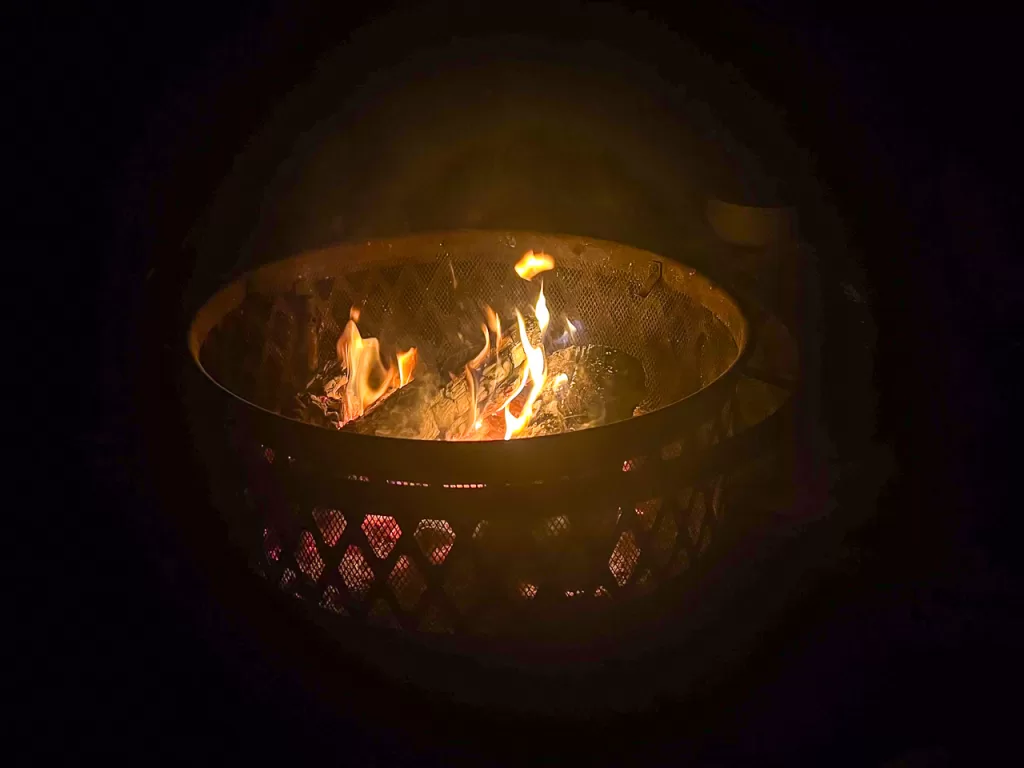
There’s nothing like sitting around a campfire at night, deep in conversation while roasting marshmallows over the flames. However, there are several safety guidelines you should follow if you plan to have a campfire.
Before leaving the house, pack a shovel and bucket to help build and extinguish your fire, as well as a fire permit (like the California Campfire Permit) if needed. Also, check your campground’s campfire guidelines and where fires are allowed. Once at your campsite, try to use any preexisting fire rings. If none are nearby (and you’re allowed to build your own), then choose a location that’s away from any flammable objects, like shrubs, low-hanging branches, or your tent. After finding a spot, dig a hole about a foot deep and circle it with rocks to create your pit.
When maintaining a campfire, keep it at a controllable size. And while you should only add paper or wood to the flames, definitely do not throw in any pressured items, cans, or glass as they could explode or emit dangerous fumes.
Finally, when extinguishing your fire, thoroughly drown it with water or bury it with dirt. Keep adding water or dirt and stirring the firepit until it’s cool to the touch. If it’s still warm, that means there are still embers burning.
For a more in-depth guide on campfire safety, check out Smokey Bear’s Campfire Safety Resource.
Have a Backup Plan
When traveling into the outdoors, having a backup plan is always smart. Nature has a mind of its own and you never know when things like a fire could thwart your original plans. I’ve even had to make last-minute trip pivots due to unforeseen circumstances like road closures, inclement weather, and fires. To avoid scrambling to salvage your trip, or abandoning your adventure altogether, come up with some alternatives ahead of time. Ideally, they’d be spread out across a few locations, should a fire prohibit you from visiting one area. Not only will having options make your life much easier should plans change, but you’ll also have ideas for a future trip!
What to Do if You See Smoke
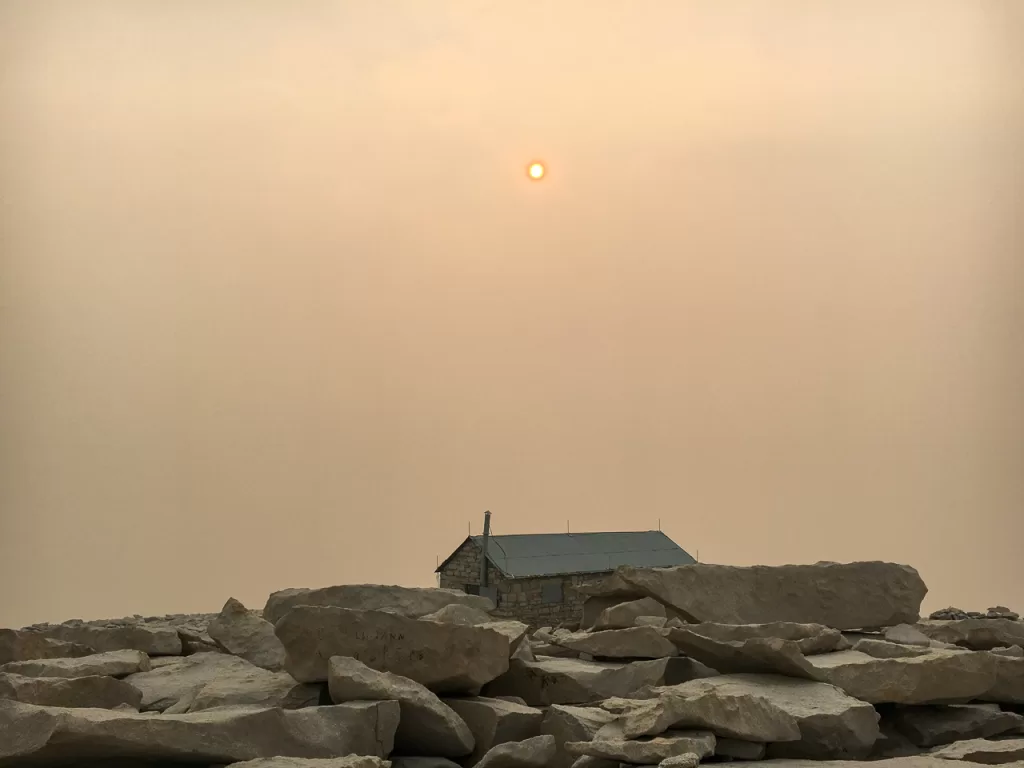
Understanding how smoke behaves is an important facet of forest fire safety. First, smoke can travel long distances in the wind, so just because you see it in the sky doesn’t mean that there’s an immediate concern. However, it still can have adverse effects on your health, so it’s important to know what to look out for. A hazy sky with orange and red hues is a sign that you should reassess whether to stay in the wilderness, as you’re likely breathing in harmful particulates. Also, if you plan on camping in a valley or basin, you might wake up to a smoker environment, since smoke tends to settle in low points at night.
If a column of smoke is visible, you can get an idea of how the fire is burning. Smoke that’s white or light in color usually means fast-burning vegetation like grass or brush is on fire. If the smoke is dark, then heavier fuels, like timber, are likely burning. These types of fires usually last longer and can potentially jump fire breaks, like rivers. And if the smoke column is getting larger, then that means the fire is growing and you should leave.
Even if there isn’t an immediate wildfire threat, prolonged exposure to smoke is bad for your health. It might be worth reconsidering your plans if smoke and ash are going to be a constant of your trip.
What to Do if You See Flames
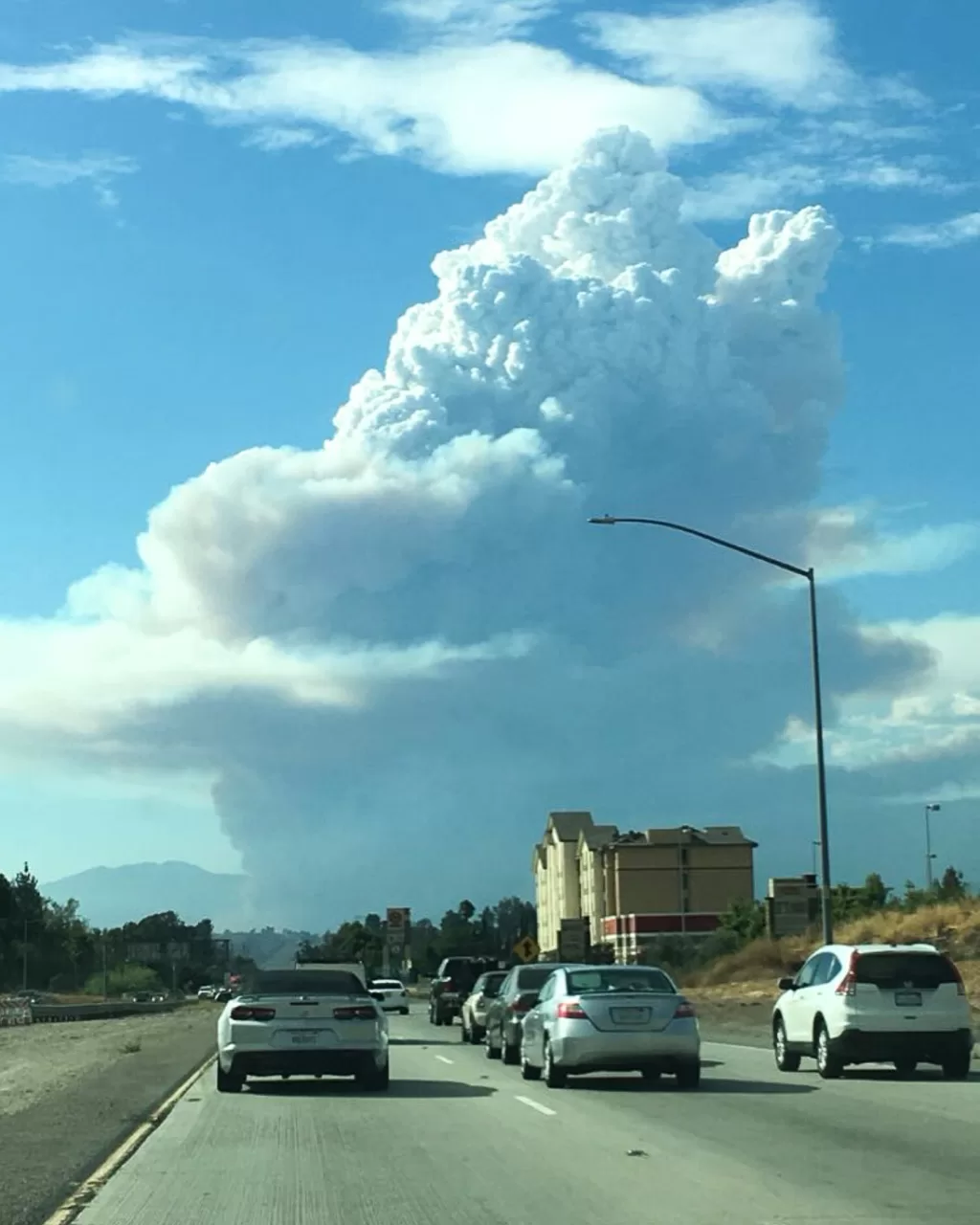
Ideally, if you follow the previous forest fire safety tips, you should be far away from any flames. However, while rare, there’s still a chance you end up in a situation where a wildfire is approaching. In this case, travel in the opposite direction of the fire. Watch the smoke column to determine how the flames are traveling, but also understand that changing winds can cause them to head in a new direction. Also, fires generally travel faster uphill than downhill. Unless you’re close to a ridgeline, descend if possible.
If the fire is close, try to head for flat areas with little plant life (like a rocky area or lake) or already-burnt land, as there’s little or no fuel for the fire to consume. However, take caution when traversing over a recently blackened area. The ground might still be very hot, potentially melting your shoes and burning your feet. And report the fire by calling 911 as soon as you can safely do so.
P.S.
REI put out a great podcast series on the 2017 Eagle Creek Fire in Oregon’s Columbia River Gorge. It dives deep into the complex nature of what happened and the history and future of wildfires in the United States. You can find more about it here.
Keep in mind these forest fire safety tips next time you venture into the outdoors! If you’re hoping to build your confidence outside, check out our advice on getting started solo hiking! Or maybe you’re looking to embark on an overnight trip in the backcountry! If so, read our article on gearing up for your first backpacking trip. And if you want help planning your next outdoor adventure, let us know! We offer a variety of packages, from building an itinerary made for you to complete trip guidance. Click below to see what we offer and to get started.

